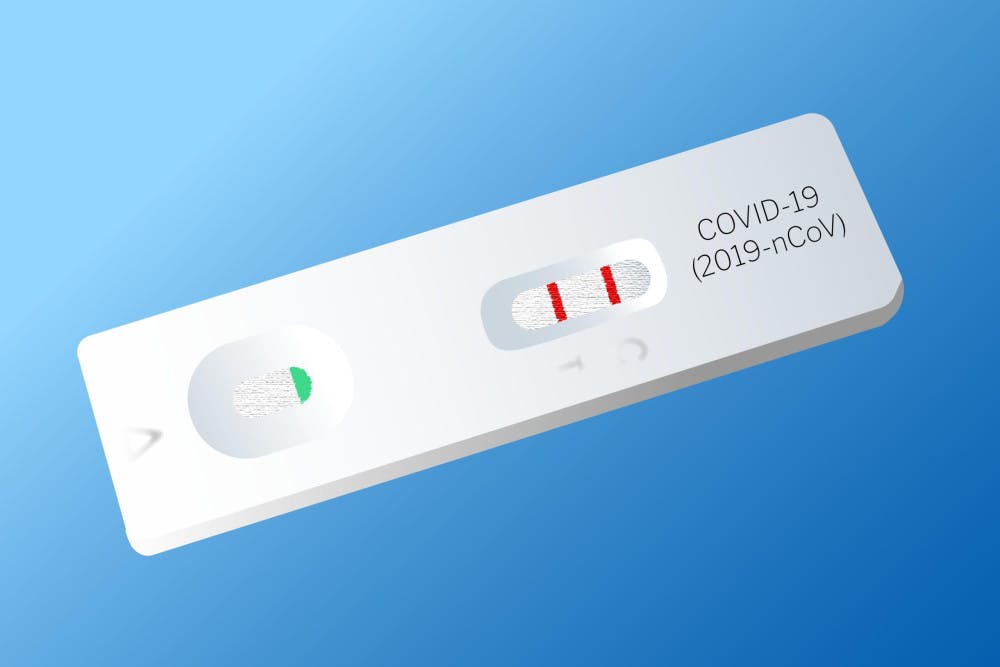COVID and quarantine updates | Graphic by Grace Merkle | The Wright State Guardian
The Centers for Disease Control and Prevention (CDC) recently shortened the quarantine guidelines despite the Omicron variant spreading rapidly. A Wright State University (WSU) professor shares the science behind the change.
New guidelines
The CDC changed the COVID-19 quarantine guidelines from 10 days to five days past a positive test. This is the second change to the quarantine length, which was originally 14 days at the start of the pandemic in 2020.
“Given what we currently know about COVID-19 and the Omicron variant, CDC is shortening the recommended time for isolation for the public. People with COVID-19 should isolate for five days and if they are asymptomatic or their symptoms are resolving (without fever for 24 hours), follow that by five days of wearing a mask when around others to minimize the risk of infecting people they encounter,” the CDC said on its website.
According to WSU Director of Communications Seth Bauguess, WSU’s quarantine guidelines are updated to match the new CDC guidelines. This is the only change the university has made to its COVID guidelines.
The science behind the change

The shortened quarantine guideline came as a shock to some, as the Omicron variant spreads across the country at a rapid pace. However, Dr. Dawn Wooley, Professor of Neuroscience Cell Biology & Physiology at WSU, says that there is a scientific reason behind the change.
According to Wooley, the average incubation period for COVID, or the time it takes from the virus entering someone's body to when they show symptoms, is six days. When a person tests positive, the incubation period has already occurred.
“See, that is taking into consideration that if you’re already positive then it has already incubated. So that makes a lot of sense in that regard,” Wooley said.
Wooley also said that at five days past a positive test, which is past the incubation period, someone is less likely to be contagious even if their symptoms still persist.
“Interestingly, people are more contagious before they have symptoms,” Wooley said.
According to Wooley, people with COVID are most contagious, on average, two days before they show symptoms and one day after their symptoms develop. This is another reason why the CDC shortened the quarantine period.
WSU’s response
The new, shortened quarantine period is the only change WSU has made to its COVID protocols. However, Dean of Students and head of WSU COVID Task Force Chris Taylor insists that the university is taking this pandemic seriously.
“In a large and diverse community like ours, it is reasonable for not everyone to agree on how best to manage something that affects so many of us. Throughout this pandemic Wright State's top priority has been and continues to be to protect the health and safety of our students, faculty, staff and visitors to campus while still providing a high-quality and affordable education,” Taylor said.
Taylor encourages anyone who has feedback on the university’s COVID guidelines to reach out to him directly or contact covidtesting@wright.edu.











